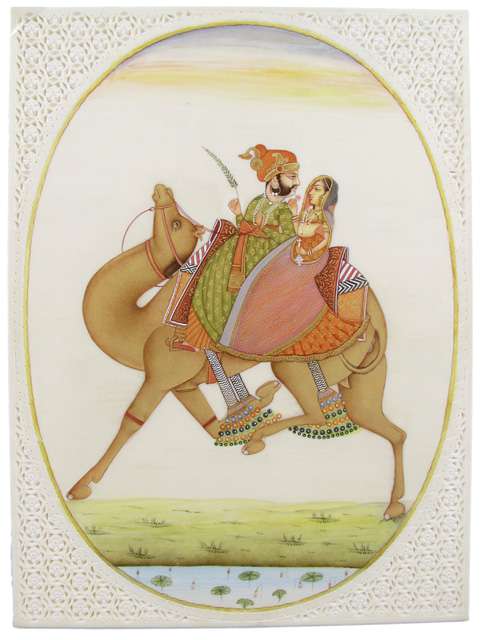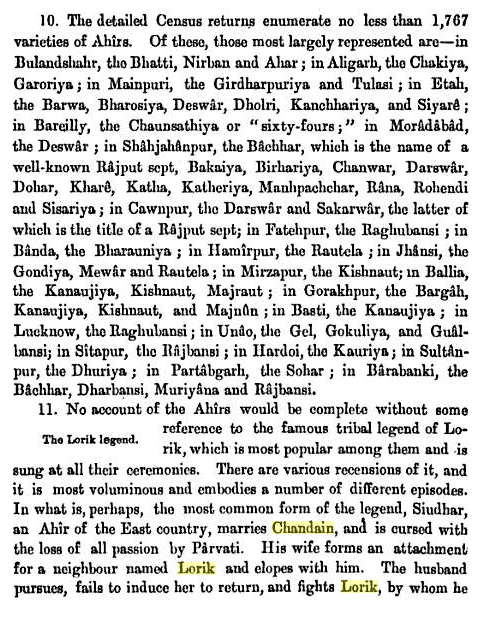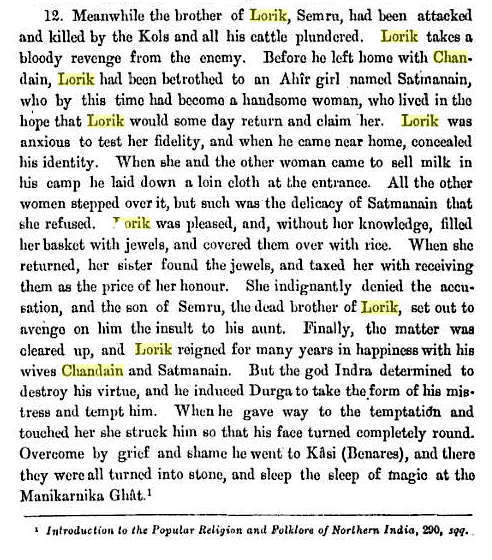Mulla Da'ud's CHANDAYAN:
the First Work of Hindi Literature?
Saturday April 16, 2011, 10:30-3:30
Columbia University, Knox Hall, room 208
~~~~~~~~~~~
The workshop is sponsored by the South Asia Institute and the Department of Middle Eastern, South Asian, and African Studies, Columbia University. It is free and open to the public, but advance registration is required:
*REGISTRATION
FORM*
~~~~~~~~~~~
Workshop
schedule:
10:00-10:30
coffee ~~ 10:30-12:30: readings
12:30-1:30:
lunch ~~ 1:30-3:30: discussion
~~~~~~~~~~~
STUDY
MATERIALS FOR THE WORKSHOP
(copies of
selected parts of this material will be made available
at the workshop itself and will be read and discussed)
In English:
*An overview of the plot by Naseem Hines*
*"The snakebite episodes within Chandayan: a journey within a journey," by Naseem Hines*
*An introduction to the (related) 'Madhumalati' by Aditya Behl and Simon Weightman*
*An overview of the Chhatisgarhi version by Joyce Burkhalter Flueckiger (see Chapter 6)*
*"Baramasas in Hindi and Urdu," by Francesca Orsini*
*"Baramasa in Chandayan and in folk traditions," by Shyam Manohar Pandey*
~~~~~~~~~~~
In Hindi:
*An introduction to the text by Mataprasad Gupta*
*The text as edited by Mataprasad Gupta*
*A glossary by Mataprasad Gupta*
~~~~~~~~~~~
In Urdu:
*An introduction to the text by Muhammad Ansarullah*
*The text as edited by Muhammad Ansarullah*
~~~~~~~~~~~
WORKSHOP PACKET MATERIALS (selected
by Allison Busch):
1.
Stuti Khand -- We will focus especially on verses
1, 6, 8, 9,17
All of the major Hindi Sufi
works begin with a “stuti khand” or “praise chapter.”
These introductions, which draw upon the Persian Masnavi
tradition, reveal interesting theological and political
details. We also can learn something about how the
author situates his work.
2. Chanda and Lorik
first meet and fall in love -- focus on
v. 153 (Gupta)= v. 152 (Ansarullah);
vv. 169-73 (Gupta)= vv. 168-72 (Ansarullah)
Love or “piram” is one of the
major themes of the Indo-Muslim Sufi narrative. Here
Daud takes up the poetic theme of viraha, lacing it with
yogic and Sufistic imagery. (NB the verse numbering is
slightly different between the Gupta and Ansarullah
editions)
3. The second snake
bite episode -- focus on
verses 315, 320, 323, 324
Chand, Lorik’s beloved, has now
been bitten by a snake for the second time. Lorik
despairs of her life and laments. (For an analysis of
some of the Sufi resonances, see the article by Naseem
Hines.)
4. Maina’s Barahmasa --
focus on verses 339, 344, 345
A typical
motif in these Sufi tales is the rivalry between the
protagonist’s abandoned first wife and his favored
beloved. Here Maina, Lorik’s first wife, expresses her
anguish at being abandoned to Surjan, a traveling
merchant. Her lament takes the form of a barah-masa, a
typical Indian folk genre. (See articles by Orsini and
Pandey on the workshop website.)
~~ *list of other workshop topics* ~~ *fwp's main page* ~~




